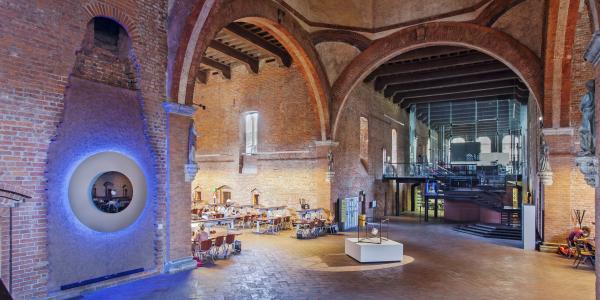Archaeological digs, national and international cooperation projects in the fields of research and education.
Historical and cultural heritage
The University of Milan has several locations with a history linked to national and local history. The social and political changes that occurred in the decades following World War II fuelled new needs in the fields of education and research.
The University grew over time, adding several locations in Milan and other towns in Lombardy, such as Sesto San Giovanni and Lodi, to the prestigious, monumental headquarters of the Ca’ Granda on via Festa del Perdono, in the centre of Milan, and the historic campus of Città Studi.
These properties, often protected by heritage status, house works of high artistic, historical and scientific value. Today, this heritage is part of the University museum network, with the library system and several archives and centres seeing to its conservation and dissemination through permanent and/or temporary collections.
The University also organizes or participates in archaeology and palaeontology excavation activities in Italy and abroad as a contribution to training, research, and cultural exchange initiatives with national and international institutions.
Avviso di istruttoria pubblica per l’avvio del percorso di co-progettazione, ai sensi del Decreto del Ministero del Lavoro e delle Politiche Sociali n. 72 del 31 marzo 2021 finalizzata alla stipula di una convenzione per favorire la promozione e la diffusione della conoscenza dei beni culturali dell’Università degli Studi di Milano e per lo svolgimento di attività di supporto alla vigilanza, fruizione e accoglienza del MUSA – Museo Universitario delle Scienze Antropologiche, Mediche e Forensi per i diritti umani, dell’Orto Botanico “Città Studi” e di altri siti del Sistema Museale d’Ateneo.







